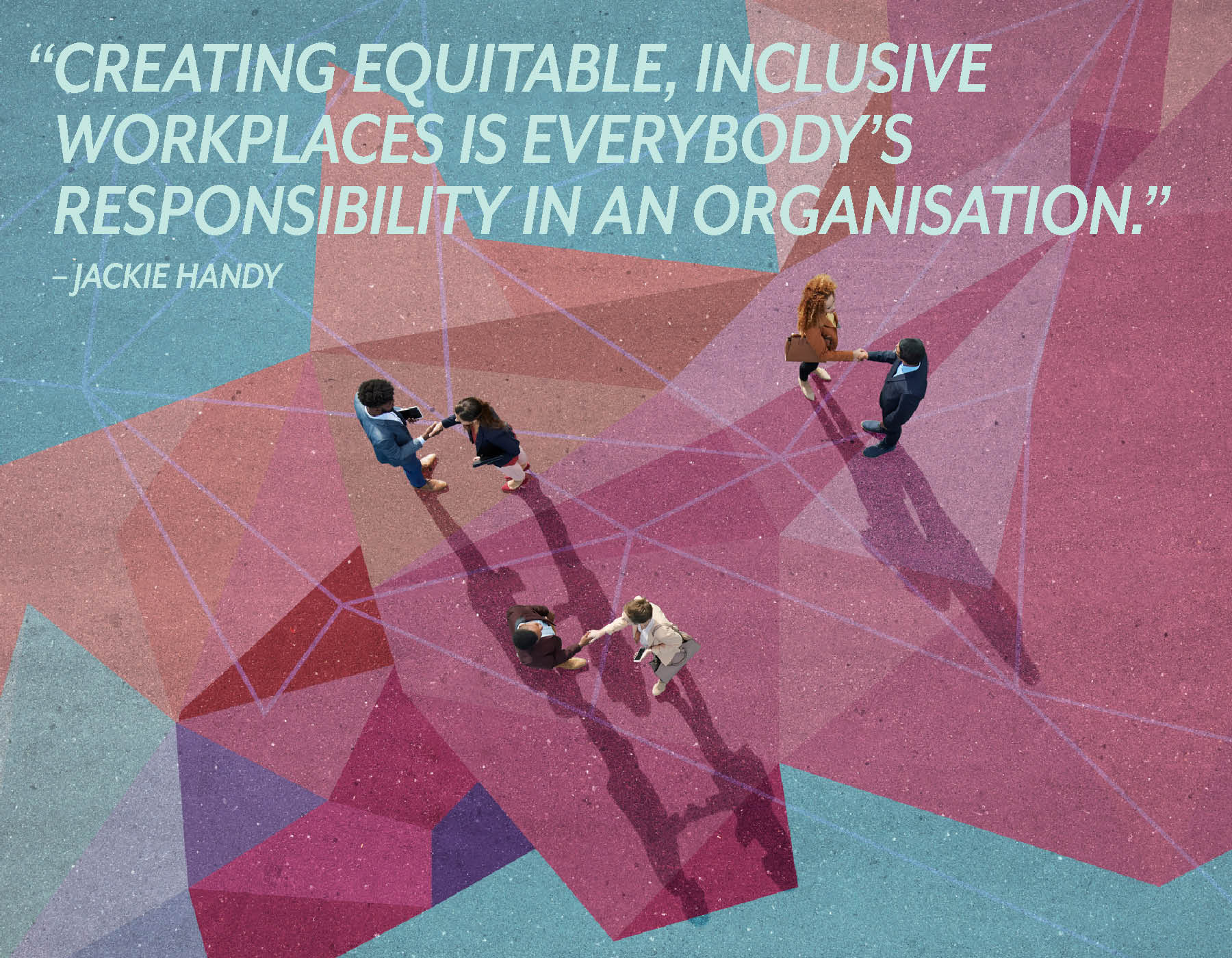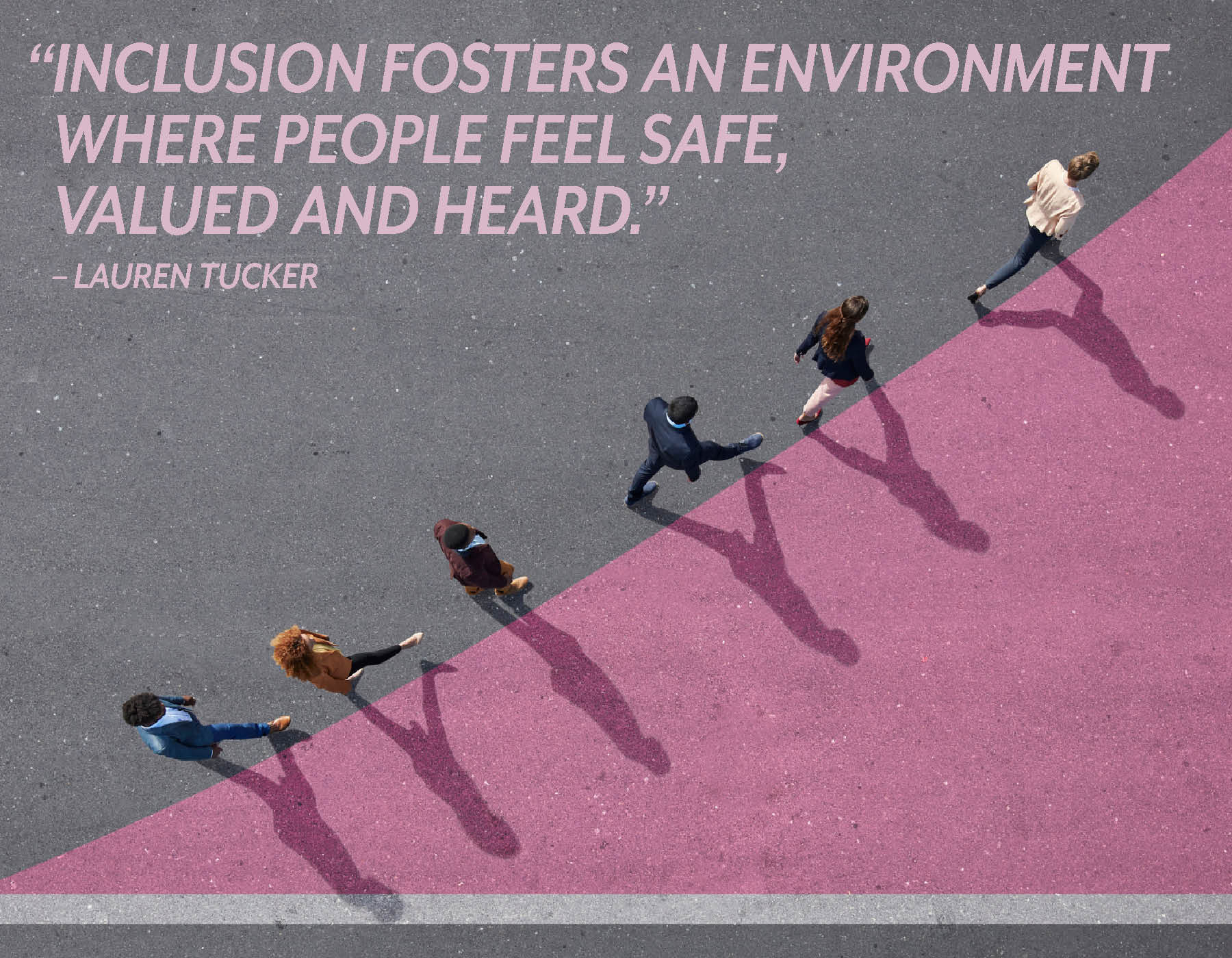Language
You can read the magazine in one of the following languages
The importance of inclusion in a workplace is being increasingly understood. It can help a business thrive in less time as there is greater productivity from happier employees working together. As well as higher staff retention, a focus on inclusion can also make your company somewhere great talent wants to move to – and means a higher quality of candidate when roles come up. Innovation and creativity are increased as employees feel confident in airing ideas, and a culture of listening means these can be more readily considered and acted upon.
In the past, there has been confusion about the differences between ‘diversity’ and ‘inclusion’, and they are indeed very different and require contrasting approaches.
“Inclusion fosters an environment where people feel safe, valued and heard,” explains Lauren Tucker, CEO of inclusion management consultancy Do What Matters. Inclusion requires proactivity from organizations in creating an environment that allows people to thrive as themselves. Diversity is simply difference; it is tangible and factual.
There has been much focus in recent years in making sure companies hit diversity targets, but without inclusion it could be argued that this lacks meaning and fails to be effective. “If an organization focuses only on diversity, they run the risk of creating hiring targets to increase areas of under-representation, only to find the environment that talent is entering does not leave them feeling safe, valued and understood,” says author and diversity, equity and inclusion expert Jackie Handy.
“This will lead to demotivation, underperformance and disengagement, possible disputes or grievances and resignations. I think one of the biggest mistakes around inclusion in the workplace comes from a lack of differentiation between diversity and inclusion, and simply thinking that hiring diverse talent and meeting diversity targets will solve problems and pacify the workforce. It won’t. All the best data tells us that the organizations that focus on a joined-up approach will have the most success.”

Data such as the 2019 McKinsey ‘Diversity wins: how inclusion matters’ report found that diverse teams are more creative, innovative, productive and profitable, but that can only happen when the correct inclusive environment is created. Investing in diversity, equality and inclusion as part of a wider corporate strategy, rather than a one-time intervention, will cultivate psychologically safe environments.
“Transformation takes time – time as in years, not months – but if you want your company to still exist by the end of the 21st century, you’ll need to start the work now,” Tucker insists. “Ongoing engagement studies with metrics to provide insights on how management can continue to create a healthier culture, reflecting the needs of an ever-changing employee base, are the foundation for sustained and meaningful inclusion.
“Then leadership, management and the individual contributors must embrace the findings and have the courage to make meaningful changes that will evolve over time.”
Because inclusion is less tangible than diversity, it can be hard to measure and track so managers must look beyond the obvious and think a little more abstract when it comes to evaluating inclusion. Conducting regular employee satisfaction surveys can be useful but also consider why people are attracted to work for your organization.
If you have an inclusive culture, that will be a factor in attraction. Why do people leave? If staff turnover figures are high, this could be a sign that the environment is lacking inclusion. Do you conduct exit interviews? Questions around inclusion can be added into these interviews.

Handy also suggests making “stay” interviews the norm too. “Examples of questions to ask during a stay interview include: what keeps you here? What would make you leave the company? If you could change one or two things about our organization, what would they be? They are extremely effective and allow a manager to address any potential problems before they manifest into something with more serious consequences. One of the biggest reasons people leave jobs is a lack of feeling valued, and that is a big factor in creating inclusive working environments.”
Inclusion does not just happen in the workplace though. It takes time and needs the support and action of every single member of staff, from the bottom to the top, to work and have a positive effect. “It’s a mistake to think you can hire a Diversity Lead and expect them to change everything,” Handy points out. “Creating equitable, inclusive workplaces is everybody’s responsibility in an organization, and it needs the buy-in and commitment from everyone to make your workplace environment a truly diverse, equitable and inclusive place. Education is hugely important in such nuanced work.”
This work needs a concerted effort and clear strategy to outline a journey for the company to take. It takes time and engaging with external specialists in the DE&I field will help ensure your approach is suited to your wider business strategy. “Humanity is wonderful and our diversity strengthens us,” Handy says. “When we truly focus attention on inclusion, not only will it enrich our own lives but also the lives of those in our workforce. That is one investment you cannot overlook.”
How do you communicate in an inclusive way that unites and inspires everyone on your team? Handy says that whether you are using verbal, written, posture or gestures to communicate, there are simple steps to make this inclusive to the members of your organization.
“Inclusive communication is about the day-to-day words and phrases used and behaviour demonstrated,” she explains. “Given we all have our own unique interpretation of the world around us, it is inevitable mistakes will be made – but create a permissive environment that acknowledges that mistakes and misjudgements may occur and, by being courageous enough to say you don’t have all the answers, this will promote reciprocity from those in your workforce and a curiosity to learn.”
Develop a safe feedback culture and receive and respond positively to feedback when it’s given. “Rather than defend or justify, accept feedback without judgement,” Handy advises. “Apologize when necessary and ask for ways to rephrase language or adapt behavior. Your employees need to be able to raise concerns upline, downline and with their peers. Without everyone on board, there won’t be the trust and openness required.”
